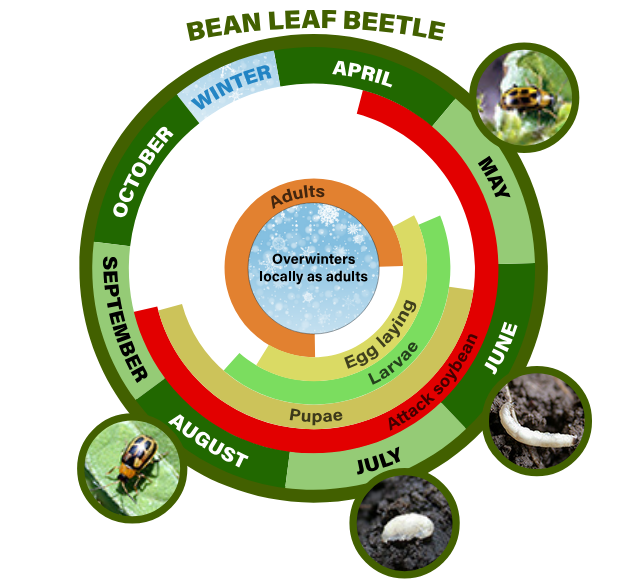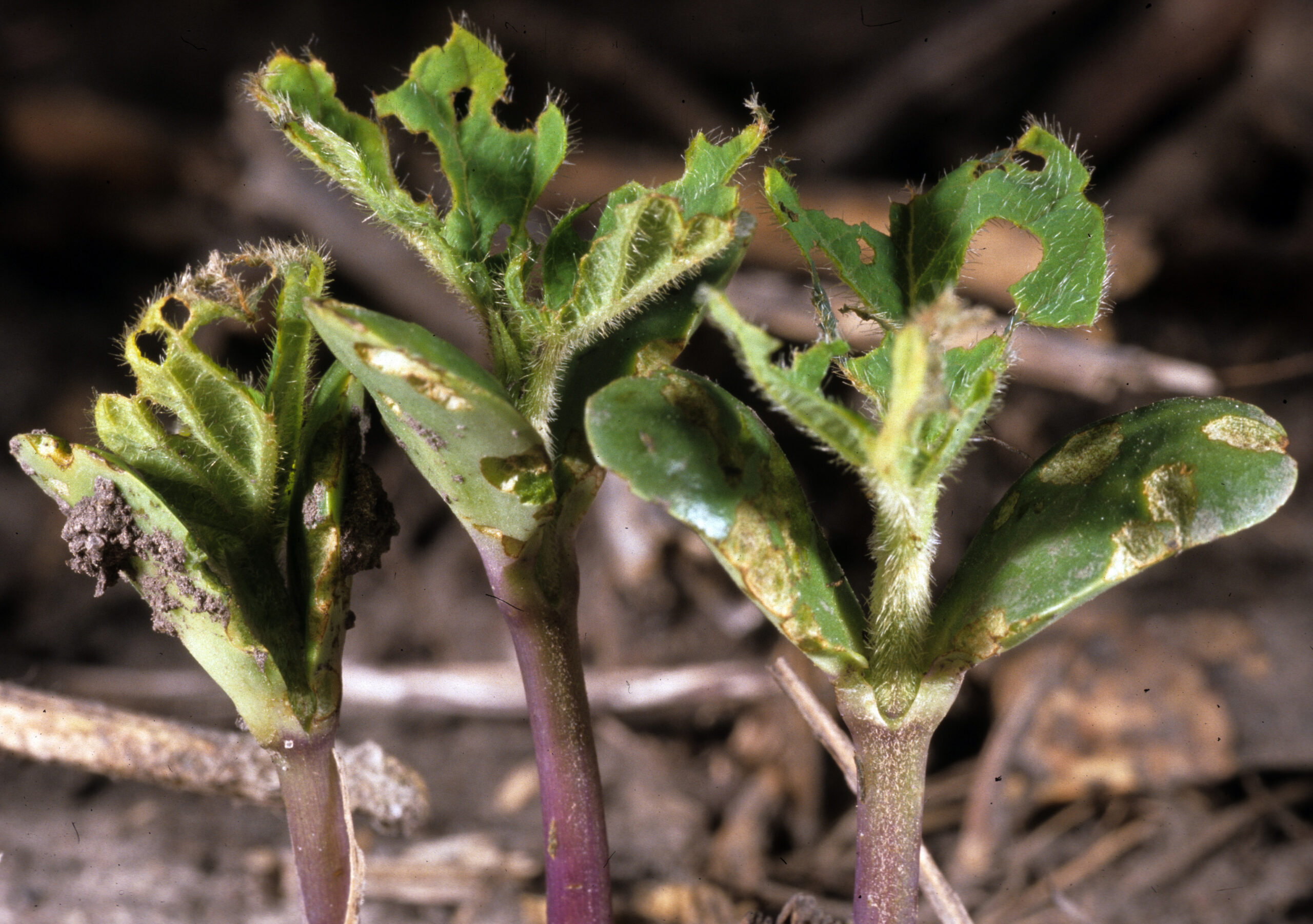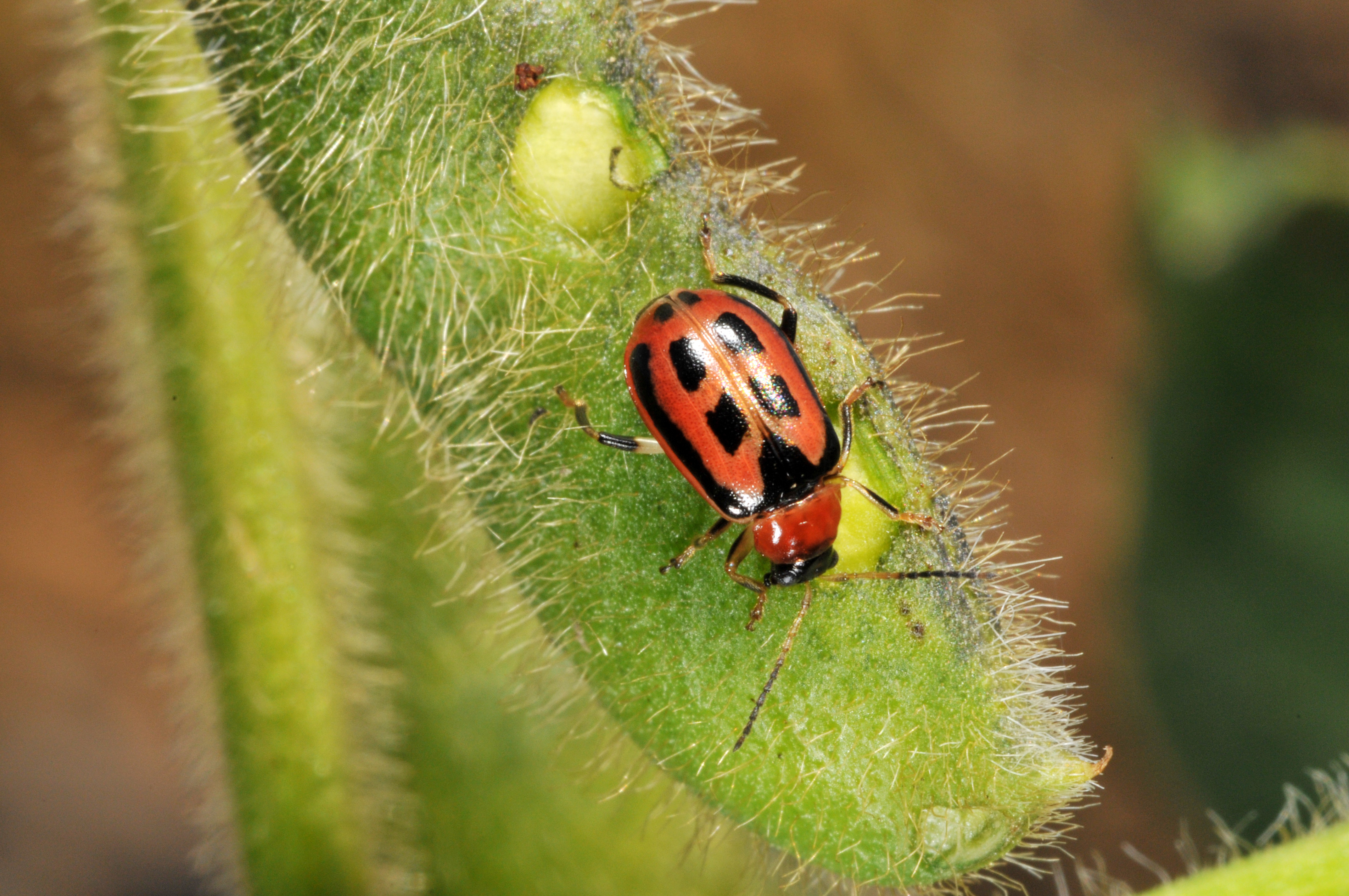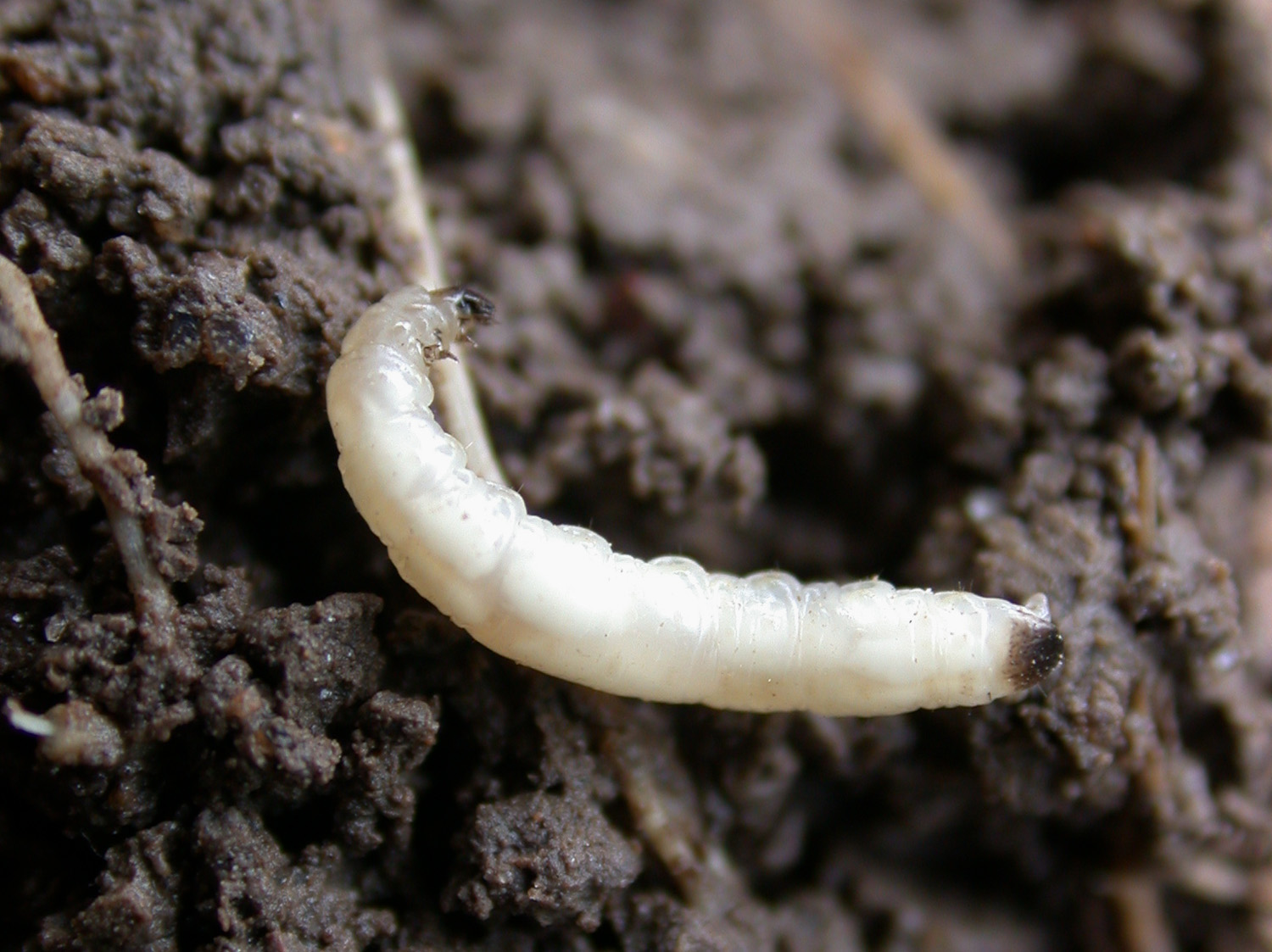Bean Leaf Beetles (Soybean)
Cerotoma trifurcata Forster
Search the Pest & Crop Newsletter

The ability to see these full-sized life-cycle images is currently disabled to resolve an issue.
Related Video Resources:
Appearance and Life History
The bean leaf beetle can occasionally be a destructive pest of soybean in the Midwest Bean leaf beetle adults are found in soybean throughout most of the season causing damage to soybean foliage and/or developing pods.
Bean leaf beetle adults are about 1/4 inch (6 mm) long and usually yellow, tan, or red in color. The beetle is distinguished by a distinct black triangular mark on its wing covers directly behind the thorax (the “neck” area of the insect). Often two black spots are present on each wing cover and a distinct black band extends around the outer edges. Sometimes the wing covers have no markings, except for the black triangle.
The bean leaf beetle larva lives underground, is white in color and distinctly segmented, with a brown head and a brown hardened area at the posterior end of its body. To the naked eye, it looks almost identical to the corn rootworm larva. It feeds on soybean nitrogen fixing nodules and, to a lesser degree, soybean roots.
Damage

Photo by J. Obermeyer
A heavy bean leaf beetle infestation may cause serious leaf and pod damage. Overwintering adults colonize early emerging soybean, feeding on the cotyledons, stems, unifoliate leaves, and emerging trifoliolates. Stand losses are possible in soybean at this stage of growth. First and second generation beetles chew small round holes in soybean leaves during mid and late season. Once the maturing foliage becomes less attractive to beetles, they feed on the green tissue of pods, leaving a thin membrane over the seed. During pod maturation, this membrane often cracks leaving an entry hole for air borne plant pathogens that may cause discolored, moldy, shriveled, and/or diseased beans.
As noted above, the larvae feed on root nodules and girdle roots. The amount of damage that normally occurs has not been shown to significantly reduce yields. Therefore, no specific sampling technique has been developed to determine larval population levels and they are not considered pests at this stage.

Photo by J. Obermeyer
Sampling Method
There are 3 important times to evaluate fields for bean leaf beetle activity:
- Early in the season
- Determine the amount of cotyledon, stem, and foliage feeding damage caused by the overwintering adults.
- Scout plants in 5 areas of a field and determine the degree of cotyledon or stem damage and/or the average percentage defoliation level for plants in each area.
- Note the number of beetles per plant.
- Note whether the growing point is being severely damaged or killed on any of the plants.
- Watch for areas where replanting may be necessary due to seriously damaged or dead plants.
- Mid and late season (Determines whether a control application is necessary)
- Scout plants in 5 areas of a field.
- Determine the percentage defoliation level for individual plants in each area and estimate the average percentage defoliation level for the field as a whole.
- Assess the density and activity of the beetle population and other defoliators in these areas.
- Approach the sampling area slowly since the beetles will drop from the foliage to the ground and hide.
- Sample mid-morning (after the dew has dried from the foliage) or early evening.
- Late in the season
- Determine whether beetles are feeding on the pods. This damage results in a white paper thin membrane which covers the seed.
- 5 areas of the field, 2 random plants in each area.
- Count the number of pods per plant and the number that show insect damage. Figure the percentage of damaged pods per plant for the field as a whole. Note if the pods are green, beginning to turn yellow, or are yellow/brown.
- Take 5 sets of 20 sweeps in the field. Determine whether beetles are still actively feeding while surveying the field.
Management Guidelines
Soybean Insect Control Recommendations: E-series 77-W (PDF)
Defoliation: Prebloom to Full Bloom (stages V1 to R2): greater than 30% defoliation. Beginning pod to beginning seed (stages R3-R5): greater than 10% defoliation. Full seed (stage R6): greater than 15% defoliation with beetles actively feeding.
Pod feeding: when 5% damage to marketable pods exists and beetles are present and actively feeding.




